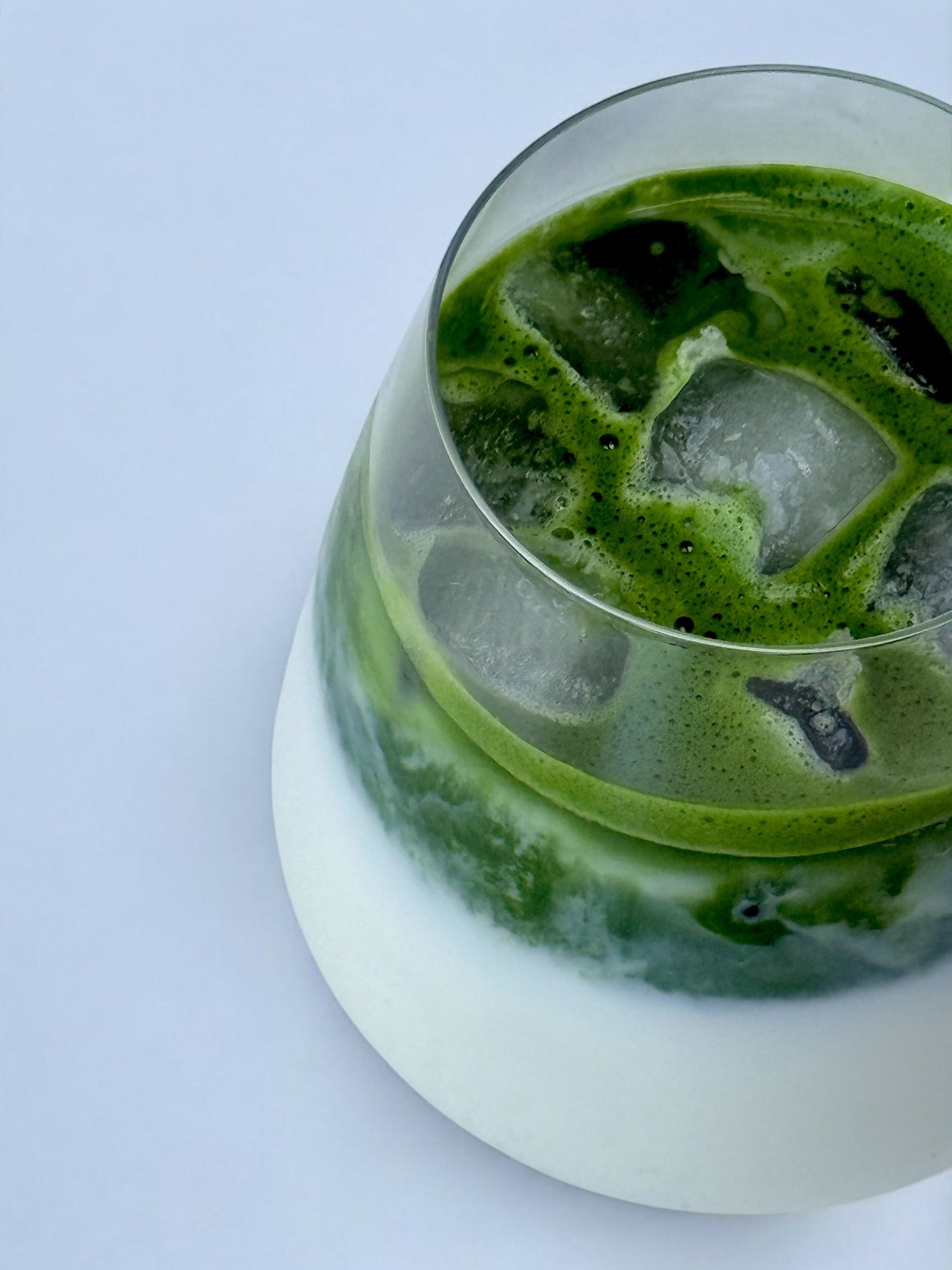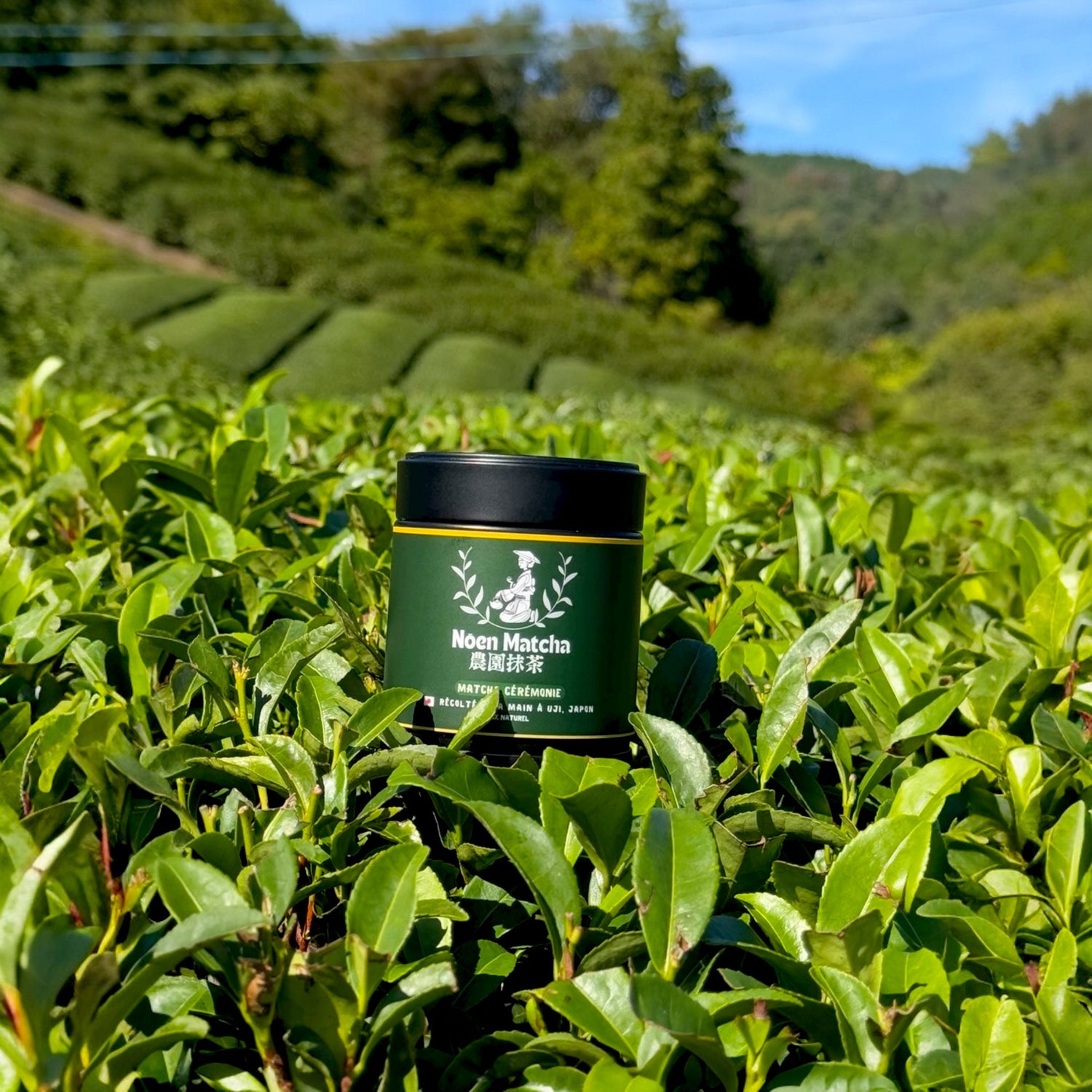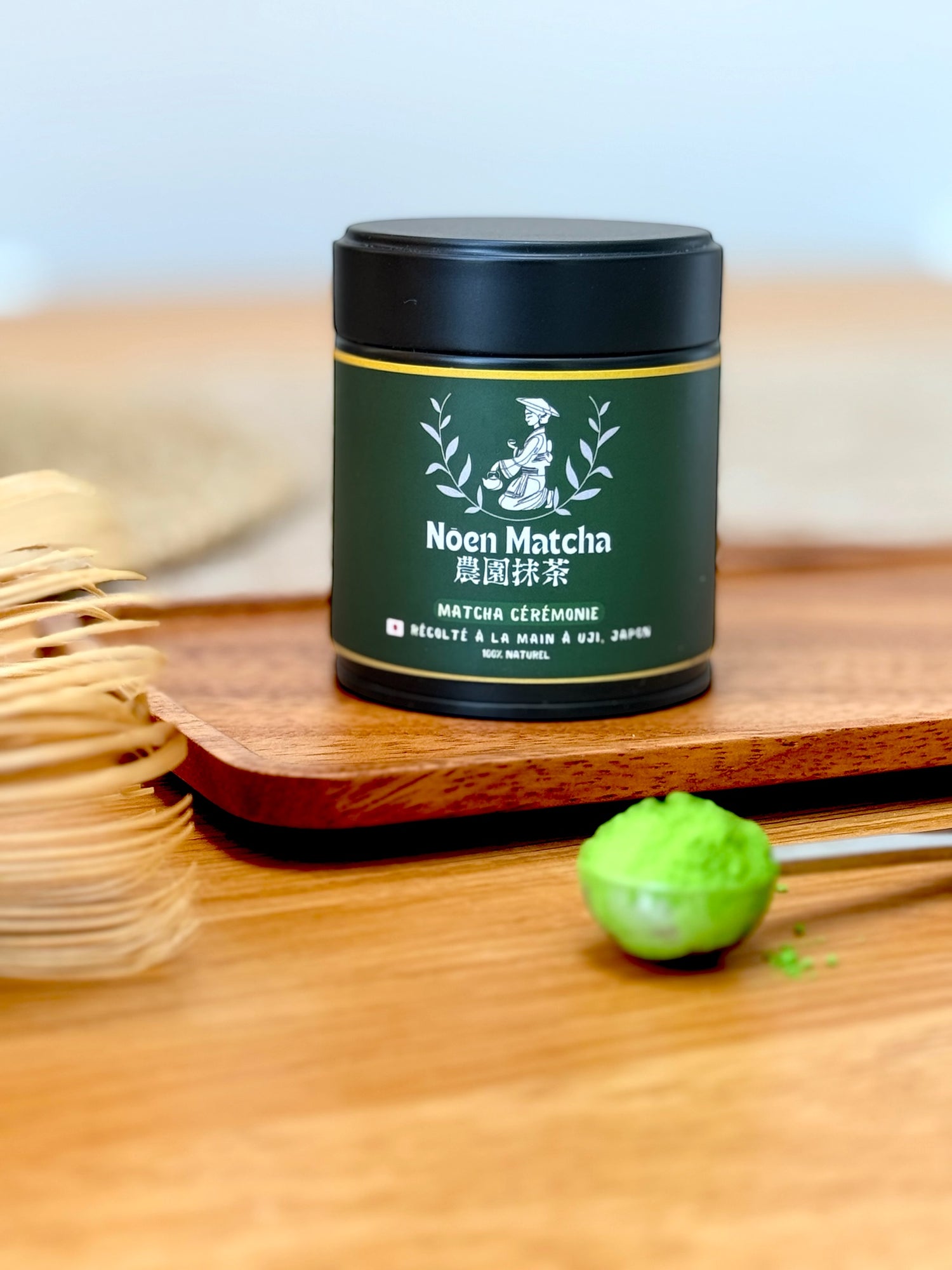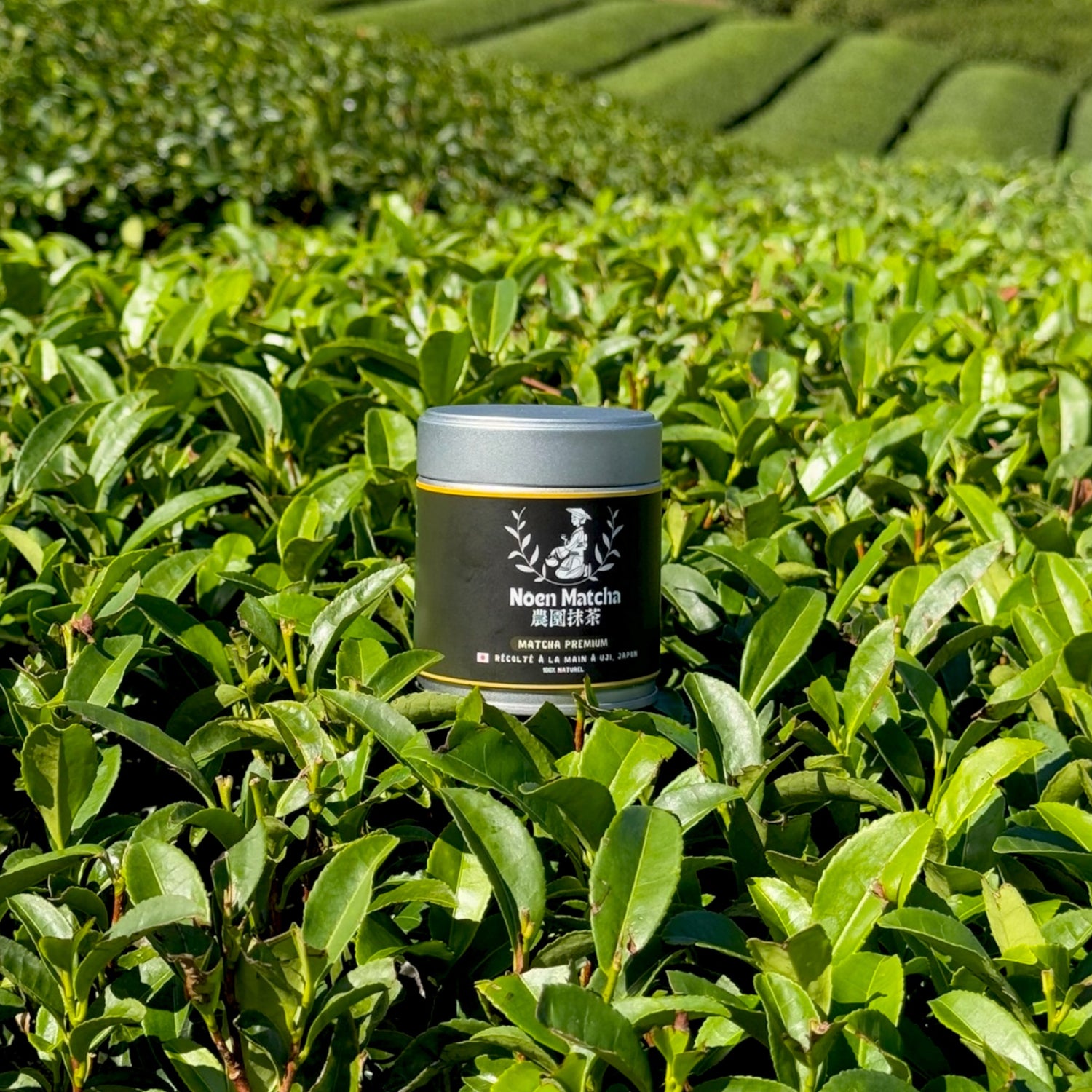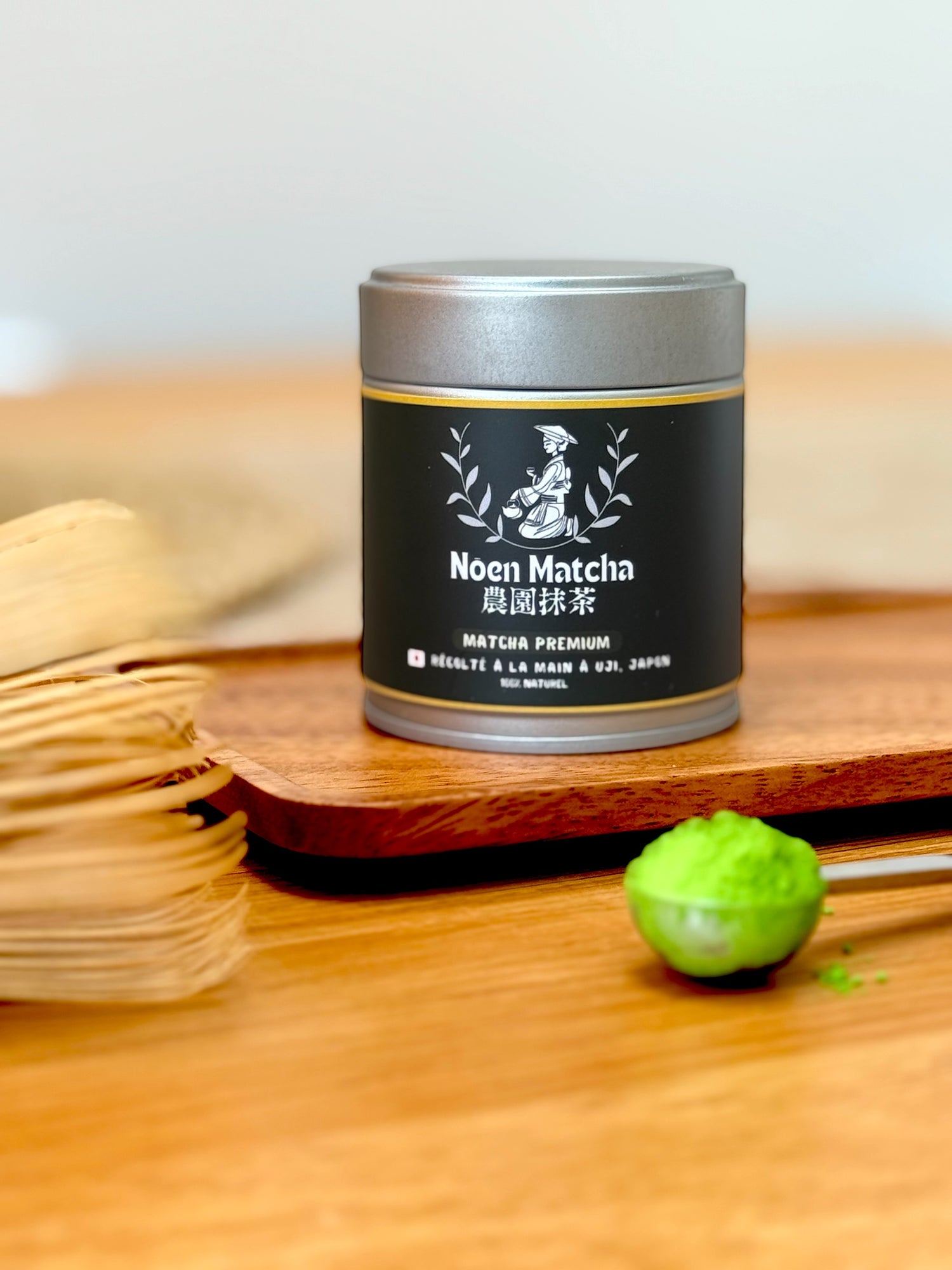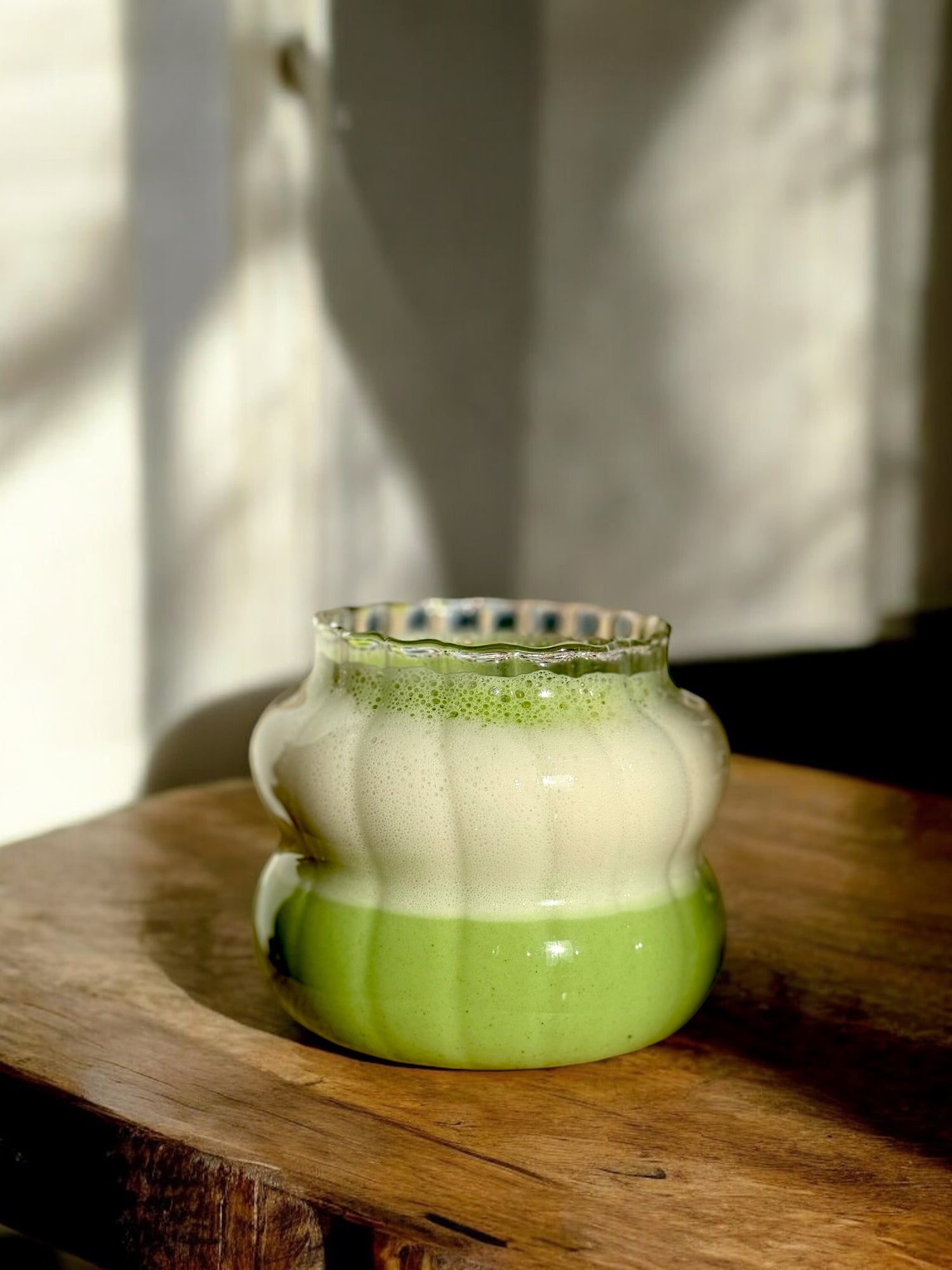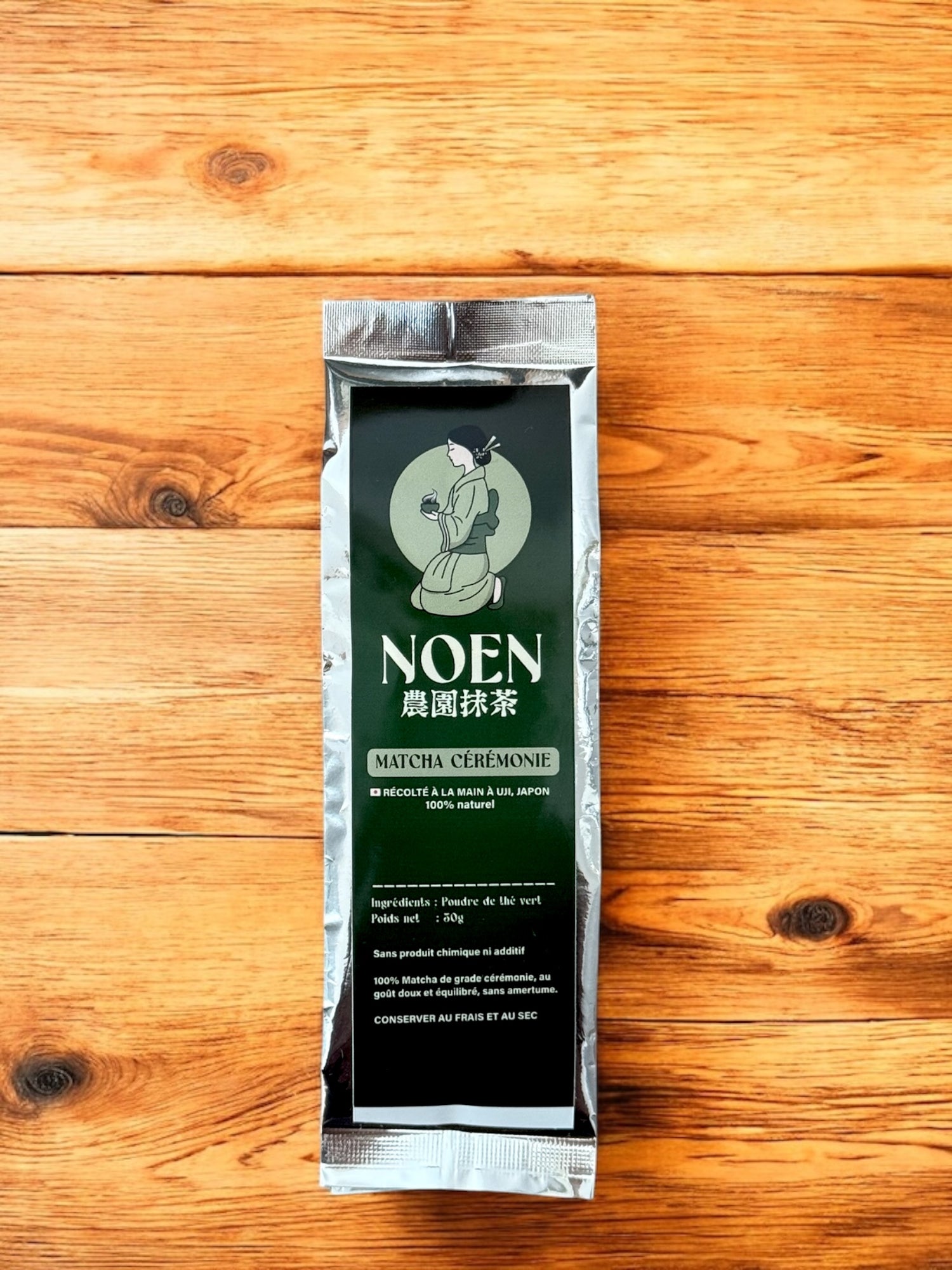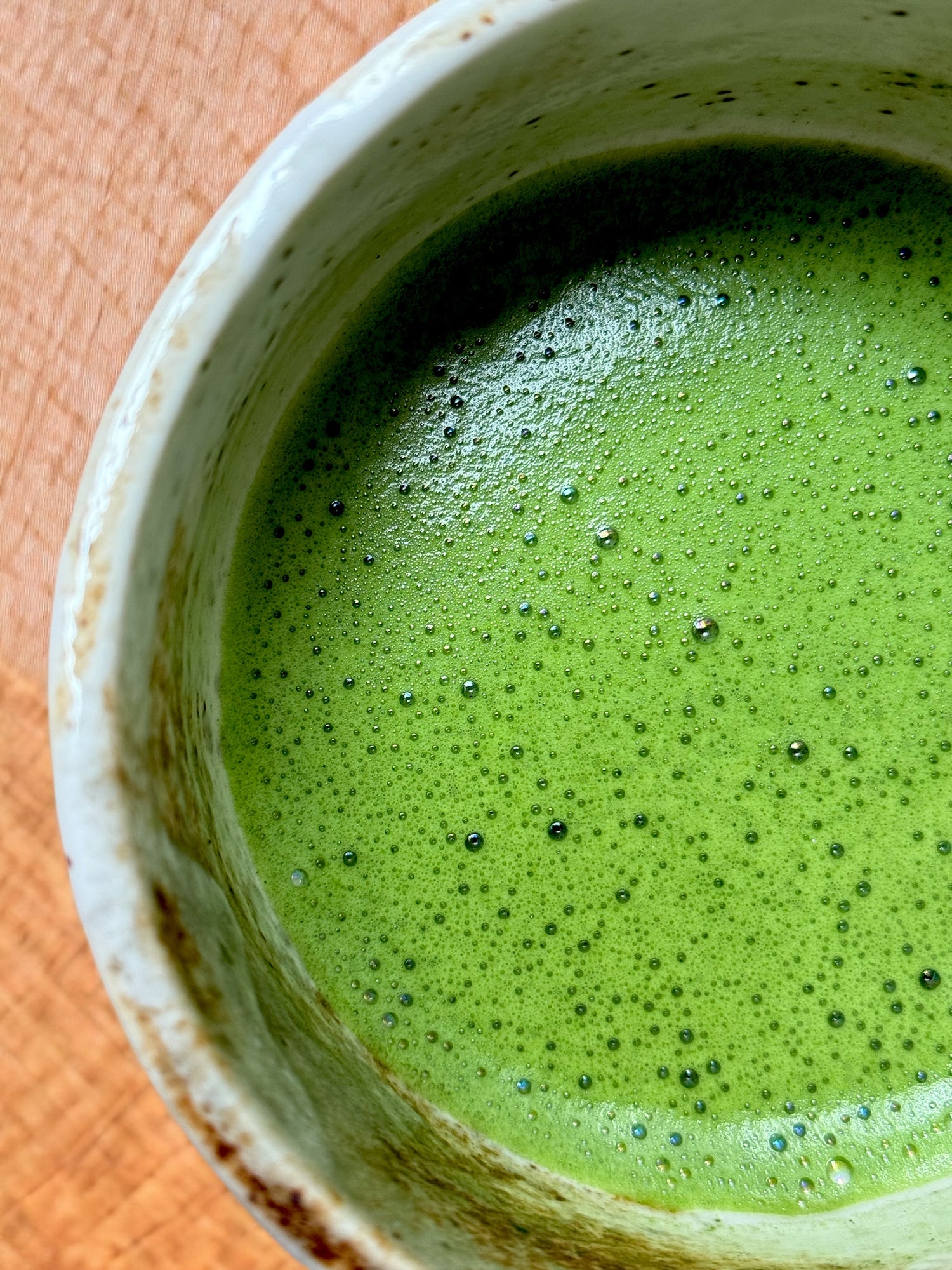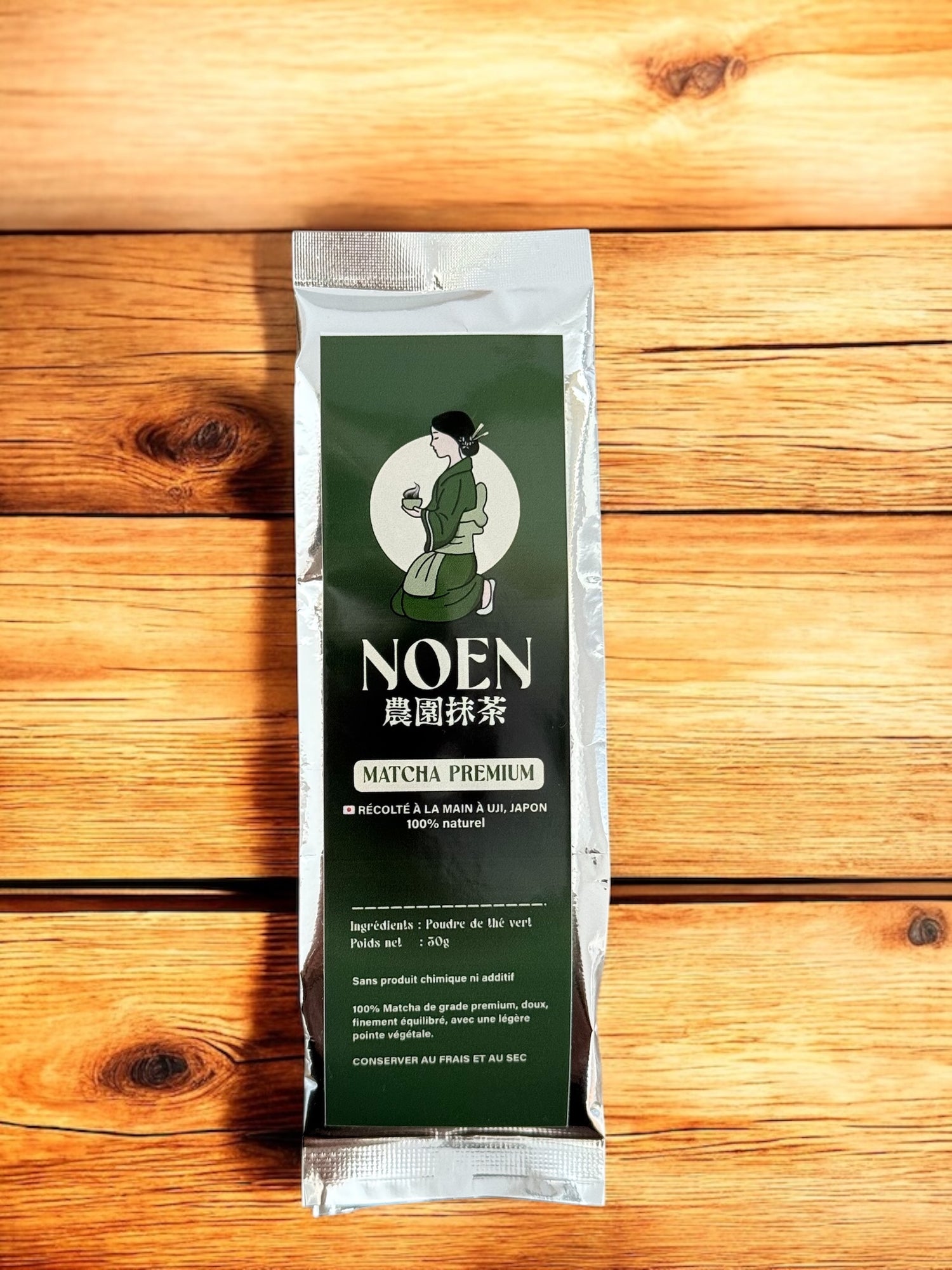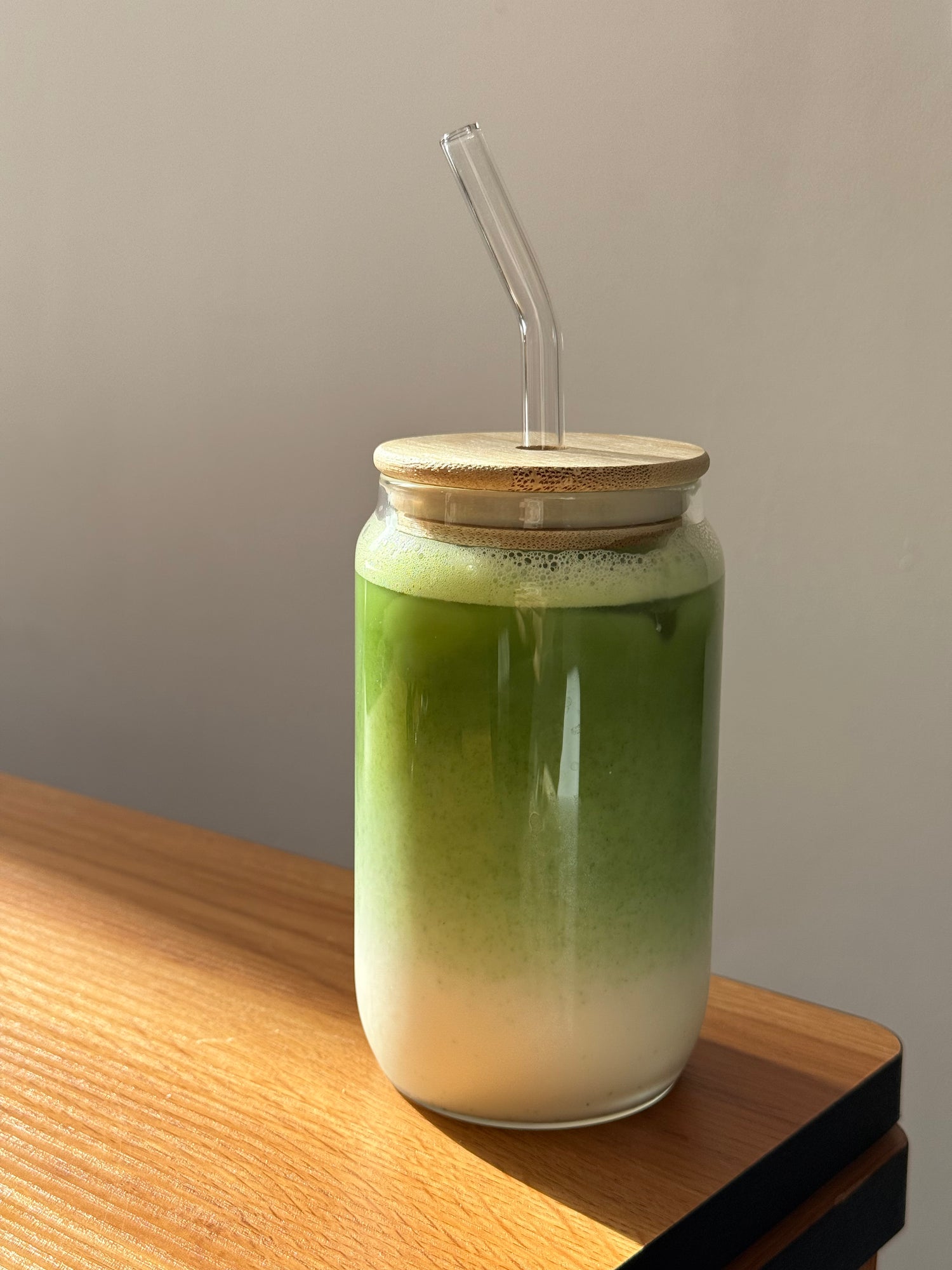How to recognize a good Japanese matcha? (Checklist before buying)
Matcha is gaining popularity, both for its health benefits and its rich flavor. But with so many options available online, it's difficult to distinguish good Japanese matcha from a basic green powder.
So, how do you recognize a truly high-quality matcha ? What criteria should you look for before buying?
In this article, we guide you step by step with a professional checklist to learn how to choose an authentic matcha , rich in taste and nutritional properties.
What is a good matcha?
A good matcha is a powder of tencha green tea grown in Japan, obtained by traditional grinding with a stone mill . It is characterized by:
-
an intense and luminous green color,
-
an ultra-fine texture,
-
a sweet and deep taste, marked by umami,
-
a pure composition, without additives.
These qualities depend directly on the terroir, the variety of leaf used, the time of harvest and respect for the traditional Japanese process.
The 7 criteria for choosing a quality matcha
Here are the things to check to ensure you buy a truly good Japanese matcha.
1. Origin: exclusively Japan
Authentic matcha comes from Japan. Regions like Uji (Kyoto), Nishio (Aichi), Shizuoka, and Kagoshima are particularly renowned for their climate, soil, and craftsmanship.
Matchas from other countries (China, India, Vietnam) do not offer the same finesse of taste or the same traceability.
At Noen Matcha , we have selected producers in Uji , a region considered the cradle of Japanese matcha.
2. The color: bright green, a sign of freshness and quality
The color of matcha is a direct indicator of its quality. A high-end matcha displays an intense emerald green , resulting in:
-
shading the leaves three to four weeks before harvest (which increases chlorophyll),
-
from the use of young leaves,
-
slow grinding that preserves the pigments.
A dull matcha (khaki, olive or yellowish) reflects inferior quality, oxidation or poor storage.
3. Taste: dominant umami, without bitterness
Umami is a flavor characteristic of quality Japanese green teas. It offers a sweet, rounded, and lingering taste sensation, without any harsh bitterness.
This characteristic taste comes from L-theanine , an amino acid produced in greater quantities thanks to the shading of tea plants.
A good matcha should be pleasant to drink neat, without needing to be sweetened with milk or sugar.
The Noen Matcha ceremony matcha is particularly suited to this traditional tasting.
4. The texture: impeccable finesse
The powder must be extremely fine , close to talc. This texture is only obtained by slow grinding with a stone wheel, which respects the leaf and avoids any heating.
Grainy or uneven matcha indicates industrial grinding, which is often synonymous with poor quality.
5. The smell: fresh, vegetal, slightly sweet
A good matcha gives off a vegetal, sweet aroma, without dusty or dry hay notes. This olfactory freshness is a guarantee of a recent harvest and good preservation.
6. The composition: absolute purity
The ingredient list should be short: 100% matcha green tea (tencha) .
Avoid products containing flavors, colors, preservatives or sugar.
Noen Matcha matchas are guaranteed to be additive-free, and some of our batches are organically grown.
7. Packaging: opaque and airtight
Matcha is sensitive to air, light, and humidity. It must be packaged in opaque, airtight packaging, ideally metal or aluminum, with a clearly marked production and use-by date.
Our packaging is designed to preserve the freshness, color and aroma of matcha after opening.
Why Uji is the birthplace of Japanese matcha
The Uji region, near Kyoto, is historically considered the gold standard for matcha. Tea has been cultivated there for over 800 years, in a naturally misty and humid environment ideal for growing shade-loving varieties.
Uji producers perpetuate traditional know-how, combining artisanal rigor and mastery of high-quality harvests. This is why we have chosen this region for our ceremonial and premium Noen Matcha matchas .
Comparison: good matcha vs. lower quality matcha
| Criteria | Quality Matcha | Low-end matcha |
|---|---|---|
| Origin | Japan (Uji, Nishio…) | Outside Japan |
| Color | Bright green, emerald | Dull green, yellow |
| Texture | Fine, powdery | Granular |
| Taste | Umami, sweet | Bitter, astringent |
| Smell | Fresh, vegetable | Hay, bland |
| Composition | 100% green tea | Additives, flavorings |
| Packaging | Hermetic, opaque | Transparent, little protected |
In summary: how to choose the right matcha
Recognizing a good matcha is based on observing simple but essential criteria: origin , color , taste , texture and composition . Respect for traditional Japanese methods guarantees an authentic, healthy and pleasant product to consume.
Noen Matcha is committed to offering you exceptional matchas, directly from Japan, cultivated with care, and adapted to each use:
-
Ceremonial matcha , ideal for pure tasting,
-
Premium matcha , perfect for lattes and everyday drinks.
Discover our selection in our online store and experience authentic Japanese matcha.

